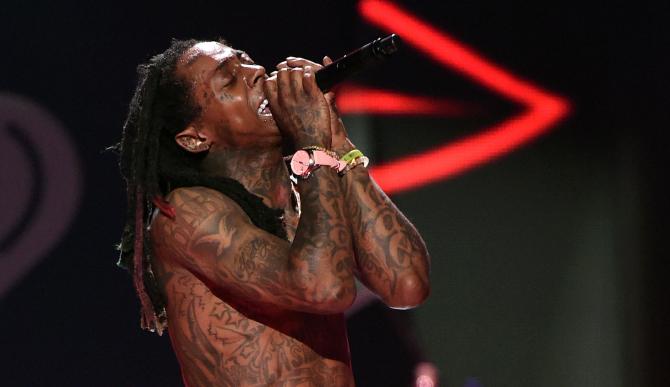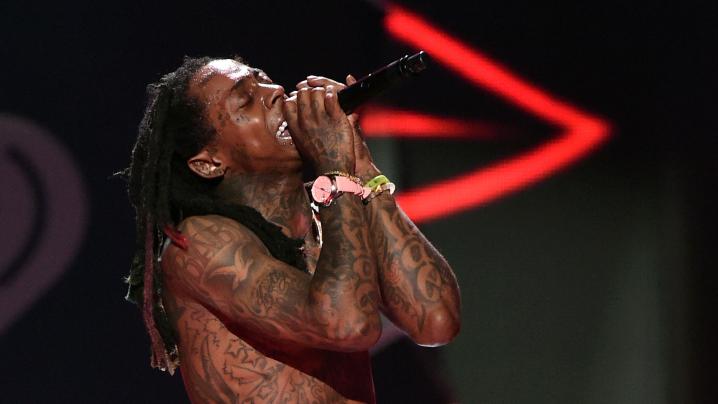[ad_1]

Lil Wayne
Ethan Miller/Getty Images for iHeartMedia
Seventeen years ago this week, Juvenile released “Back That Azz Up” (or “Back That Thang Up” if you were a baby trying to make babies on the dance floor of a high school gymnasium). The descending chords in the intro cause an immediate Pavlovian response. Men crane their necks like gazelles hearing a rustle in the tall grass and women ready their stances for the possible lone pity twerk they’re willing to give up for the evening. But what makes this song so awesome is that it not only became the urtext for all future twerk songs, it also introduced the world to Lil Wayne.
Sadly, Dwayne Michael Carter is fast on his way to becoming uncompromised, unrecognized and unparalleled at the ripe old age of 33. Since his prison bid in 2010, Lil Wayne has suffered a steady decline, which has included Empire levels of absurd drama. Wayne has dodged a tour-bus shooting, survived airplane seizures and has been embroiled in a much-publicized contract dispute with “his daddy,” Bryan “Baby” Williams, aka Birdman. Sadly, like Empire, the over-the-top situations haven’t made people pay much attention lately.
The dispute with Baby, which has apparently been resolved, has limited Wayne’s ability to release a proper album, but his spiral into irrelevance is nonetheless disheartening. If you’re not aware, or are simply praise-stingy, Lil Wayne is a hip-hop legend. He’s been around for nearly 20 years; made a successful turn from teenybopper to adult rapper; has one, or possibly two, classic albums (depending on who you ask); and he’s directly responsible for the careers of both Drake and Nicki Minaj.
Wayne is the Michael Jackson of hip-hop. Hyperbole aside, Wayne was plucked from the Hollygrove projects in New Orleans as a preteen, performed as part of a group under the tutelage of a “daddy” with animal-like features (Joe Jackson = angry cat, Birdman = self-explanatory) and subsequently sought out juvenile activity to fill a gaping hole inside because of a missed childhood.
While Wayne’s irreverent squealing can’t compare to the beauty of Michael’s voice, this man and his art should be more prominent in the hip-hop zeitgeist. Drake, Kendrick, J Cole, Future and Kanye are the names most bandied about when discussing the current top tier of prominent rappers. The first four names are part of a different generation from Wayne’s, but Kanye, his contemporary, provides a more apt comparison when discussing influence on the hip-hop world.
Objectively, Kanye has not put out a hot album since 2011. I had to take a moment to self-flagellate with my headphone cable for even allowing that truth to be written, but it’s true. Since Watch the Throne, there’s been a series of great one-off songs peppered between half-finished concepts, dated unreleased tracks and “f–k it” bars. Yeezus and The Life of Pablo could be condensed into a 10-track album, while the songs “Send It Up,” “Freestyle 4” and the remaining basura tracks could be repurposed into GarageBand Apple loops for underprivileged, struggle producers.
Even though the work has been spotty of late, Kanye has built up enough cache that being a Kanye apologist is almost a political statement. We’ve got to create space for our greats to stumble into mediocrity just like white artists do. Well, I’m here to cape for Lil Wayne because he is just as important in the transition from Jay Z to Drake as Kanye West is, despite not fitting a middle-class ideal.
In addition to being in the “featured artist” hall of fame with Ludacris and Busta Rhymes, Wayne’s biggest contribution to the current crop of millennial rappers is wordplay. Wayne popularized free association and relentless puns in a way that made you listen to the structure of the bars themselves more than the subject matter. This—coupled with his warbling, kinetic flow—gave his songs energy and a quotability that are tough to match. They also gave his songs close-listen replayability. Because of Wayne, good lyricists are more prone to include clever, eyebrow-raising nuggets than simply beating you over the head with a charter-school vocabulary test. J Cole, Big Sean and his protégé Drake all use this style, but through the melancholy, Uber-ride-home lens of 2016.
Despite being rich for most of his life now, Wayne still represents a Southern gangster underclass that doesn’t mesh with modern hip-hop. He can’t gain the cultural clout of a middle-class, artsy Chicagoan or even a New York gangster-turned-art-collecting businessman. Considering that Wayne was raised without his real father, lost his stepfather to violence, accidentally shot himself in the chest at 12, dropped out of high school at 14 and has only ever rapped for a living for 20 years, I’m more than impressed with the artistic risks he’s taken.
Rebirth? Trash. But attempting to learn the guitar? Worthy of respect.
Skateboarding? I, too, picked Kareem Campbell in the original Tony Hawk’s Pro Skater, but the second I fell? I quit.
Collaborations? “Motivation” should win the rap/sung collaboration Grammy into perpetuity.
Fashion? OK, maybe this is unredeemable.
[ad_2]





















